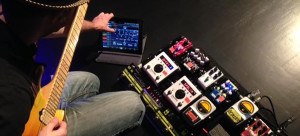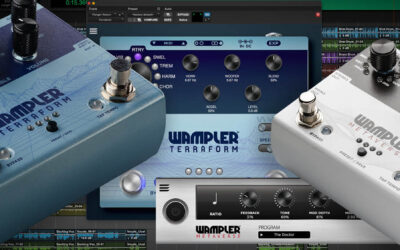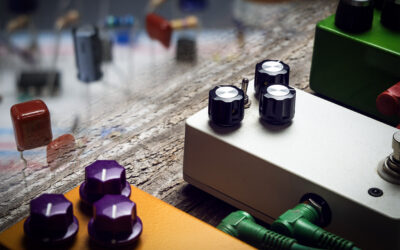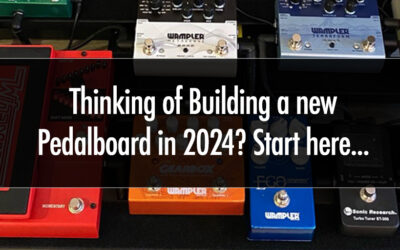Endorsements. A hot topic… But first of all, let me answer the question you just asked yourself. Part 2? Where is part 1? Well, part 1 is written but I had to get it signed off by the management of another Dave and it appears to be lost in their bottomless pit of administration. I hope one to day to be able to publish it… it was all about approaching companies for artist deals… Like I said, hopefully one day!! So, part 2 is out before part 1 and just like part 1, part 2 is all about a guy called Dave…
Before I get into that, I have to tell you that in the 5 or so years I’ve been working here I have always been involved in artist relations. Sometimes for the international market, sometimes in the U.S. market, sometimes both – it’s changed a lot over the years, but I’ve always been part of it and I’ve seen it all over the years. Most importantly, I’ve seen the market change and the players within it. The best way to describe an artist deal with Wampler Pedals is to split the basics down into four sections. It’s hard to keep the information within them, as they cross over, but hopefully you will get the idea!
1. What is an artist deal and how do I get one?
This is the golden question, so I’ll be matter of fact. An artist deal (or as we like to call them, endorsements) is where the artist and the company benefit from a mutually beneficial relationship. We rely on the artist to continually use our gear (when appropriate) in order to give credibility to the product and make it reach a wider audience. In a nutshell, it’s about building our, and the artists, reputation. The hope is that someone is so good, and their tone is so good, people who like them will buy the gear to in the hope they will be able to recreate it. Let’s face it, at one time or another we’ve all owned something that a famous person uses because they sound awesome… The artist can be someone that was historically extremely popular and still has a large and dedicated fanbase, be someone who is currently riding a wave of popular success or someone I consider to be an investment in the future – getting in on the ground floor so to speak – that is the hardest one to gauge and the one I have the hardest time when letting someone down on. To be honest, it’s a gamble. In some cases I’ve hit the jackpot and in others some people have been quietly removed from the website without fuss and never mentioned again! 😉
In order to obtain an artist deal you have to approach me (I rarely approach people to be honest) with ether a plan or a set of facts. It’s that simple. Within the approach there has to be something like a history of recorded output/releases, or a schedule of future confirmed recordings/releases, total internet reach (social media and other factors, for example if you are recording/writing pieces for magazines or teach online to a large subscriber rate), the gear you currently use, a break down of why you want us to commit to you (preferably because you love our products because if you’ve never played one of our pedals before you’ll be instantly dismissed)… Quite the list! Obviously, you don’t have to tick every box (but it’s better if you do) but you have to at least tick several. The as yet so far unpublished Part 1 of this blog covered this extensively so I won’t go into massive detail, but you have to make the approach personal and attractive.
So, let’s meet Dave. He is Dave Weiner. Many of you will know the name but it is likely that many of you won’t. Dave is a classic example of one of our artists (and many other company’s, he has an impressive list of companies he has to balance relations with) because he’s an incredibly hard working musician and is a dedicated tone chaser. Basically, Dave just loves great tone. Now, Dave came to us a few years back because he had played and loved the Paisley Drive – it was simple email, no fuss, just on point. Within it were Dave’s credentials which are as follows… He owns and runs Guitopia (formerly Riff of the Week) that is the original (and in my opinion the best) weekly internet based tutorial package for guitar players. He has 3 solo albums out, he’s a graduate of MIT and has been the guitar player in Steve Vai’s touring band for 16 years. I’m guessing that right now you don’t need to think too long and hard about this one, because when he came to us, we certainly didn’t.
What do you get?
So, what does Dave get? First of all he has the honour of saying he’s a Wampler Artist. Yep, that was a bit of a joke, I was giggling as I wrote it. 🙂 In reality Dave is entitled to buy the gear at a discounted rate (and there goes the theory that when you “sign” an artist deal you receive a box full of Wampler’s, because you don’t). You get a place on the artist page (that reminds me, I need to update the site as some are missing or need removing), and you get the opportunity to be promoted by us when you do something substantial (the last one isn’t always appropriate because with some of the more obscure artists out there it just wouldn’t work, but it doesn’t mean we don’t stand by them, it’s just not as visual) and you also can be featured in some of our promotional stuff. Dave’s been on much of our marketing materials, videos and the like over the years – He doesn’t get paid for those, but dare I say it, there was a lot of promotion for him and his primary business, Guitopia, along the line. In return, Brian has appeared as a guest on a live web chat on Guitopia – it kind of goes round in circles. So, when it’s all written down like that, there isn’t much to speak of fiscally. He saves a few bucks on products should he buy one – but if I were his accountant, I’d say that there isn’t actually much point… But, it’s not about that – it’s about maintaining a relationship with the company that makes the products you use. On the flip side of this, and to compare to others, to many artists just to be an “endorsed artist” is more than enough for them, they can put our logo on their website and use our gear all the time and that’s that. It’s all they want. I’m a little amazed and flattered when that happens, but that’s how it goes.
What do we get?
This is the big one and the one you have to sell the hardest when you contact us. It’s obvious what we get from Dave, on the Steve Vai Story of Light tour that lasted 2.5 years Dave used 2 Ego compressors from the time he got them early in the tour (maybe even at the start, I can’t remember) until the very end. He also swapped in and out some of our drive pedals throughout the tour as well (typical tone chaser, always tweaking). During this tour there were endless photos taken, gear reviews done (of both him and Steve) that showed our products (I’ve also heard from many many people since the live CD and DVD came out that Dave’s tone was much more organic and natural than Steve’s). Dave makes videos every week for Guitopia and quite often they have our products in them, we get… and here it is again, great exposure from him. He has helped us grow our brand. There have been times as well when Dave’s dropped me a message that has begun “I’ve got a great idea for a pedal…”

How does that apply to other players? Well, for a start, you have to give us access to an audience we’ve not tapped into yet. And that audience HAS to be a guitar playing audience that wants to buy new gear… This would be a classic time to mention Tom Quayle – he opened up the largely untapped modern fusion world directly to our products. A classic win/win situation. So, when approaching us, give us a run down of what you can offer us. because fundamentally, if you look at this cynically, the only question you need to answer is “How will the relationship with you benefit our company?”. If you can offer us something we can’t get elsewhere, then it’s likely you are going to win. If you can’t, then you will be disappointed.
How do you/we maintain that deal?
This is the one that is almost impossible to answer. Quite often, the onus falls on the artist to maintain. It all depends on their visibility. Our whole existence as a company is to provide tone and we are constantly bringing out new products, so you could say our part of the relationship develops daily… let’s face it, if we stopped producing pedals that sound great and started bring out ones that sucked, the artists wouldn’t want to be associated with us. We also maintain the relationship with the artist (when appropriate) within marketing materials (this could be on social media, at trade shows, etc), and there is always that presence on our website. Again, that’s enough for some people, and that’s always been a delight to me because they love the tone we provide so much that’s all they want. They literally want nothing else from us, just to be associated. But, as with all guitar players, G.A.S. is an real issue and sometimes artists fall in love with other products, those products may be from another company like ours (which encourages us to be better), they might revert back into the player that just uses guitar/cable/amp (most of us have been there), or they might discover the joys of digital modelling (which is happening a lot, and to be honest, when they do, they are so fascinated by it their social media is all about it, endless posts and videos… it can leave us out in the cold, but if history is anything to go by, they often come back because it’s so much more organic, If they don’t, well… I don’t know yet, I’ll cross that bridge when I get to it). So, let’s get back to Dave… Dave does demo’s for us now and then, when a pedal we release suits him and his style of playing. Sometimes, he says he can’t do it because he is too backed up, fair enough – but… here is the thing, being backed up may mean he has promised to do a demo video for another of the companies that endorse him. When this happens, Dave messages me and tells me it is happening. I guess the point here is communication, mutual respect and an understand that we don’t own him and vice versa. The ideal is that we both grow as a brand, and grow together AND separately.
Conclusion (sorry, the academic in me can’t resist)
The thing to remember when approaching a company to become an endorsed artist, you have to offer something (and I’ll list things people have used as an incentive for me) that others do not. Having endorsements from other companies isn’t a consideration, having a You Tube channel with millions of hits of you playing SRV covers isn’t going to work, being a successful demo artist isn’t enough, offering exposure for free gear certainly isn’t going to get you anything, winning an award for the fastest player in Hungary (a title I’ve been unable to verify) isn’t enough, being given a standing ovation one time by Guthrie Govan is a no no, starting the email Dear Mr Keeley and mentioning how much you love JHS pedals (copy and paste fail)… I could list many many examples but I won’t – the thing to remember about artist relations is at that very moment of someone new and exciting landing in my inbox, is one of the very best moments in this job, purely because the potential for excitement can be infinite.

You can, and should, check out Dave’s website, and of course, check out Guitopia. I personally recommend it!



0 Comments